The 50 most important games of all time
This is how the video game industry got to where it is today
31. Diablo (1996)
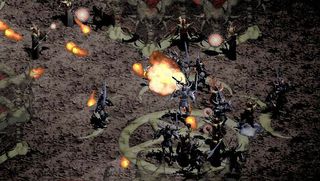
Ah, lovely, lovely loot. Diablo popularized action-RPGs, stripping away the boring, slow-paced action of its predecessors and distilling the get loot aspect that made the genre so appealing in the first place. The result was a smooth, fast-paced, and still impressively-animated isometric dungeon-crawler, which spanned two wildly successful sequels and countless imitators.
But one of the game's greatest pulls was its four-player cooperative gameplay. Taking on a dungeon with friends and sharing the spoils remains one of gamings finest social experiences. For a game made in the 90s, playing it is still utterly compelling, and its carefully devised formula for addictive play has found its way into everything from World of Warcraft to Borderlands.
30. Halo 2 (2004)
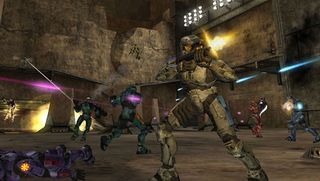
The second Halo is the weakest game of the original trilogy but, bizarrely, it's arguably the most important. While Combat Evolved was Microsoft's Xbox system-seller, allowing the PC giant to gain a foothold in the console market, it was the follow-up that popularized online gaming on consoles, finally fulfilling the promise that earlier titles like Chu Chu Rocket had shown back in the Dreamcast era.
While Halo 2 was by no means the first game to include modes like King of the Hill and Oddball, these multiplayer variants helped to set the game apart from other, more vanilla shooters that just offered deathmatch or team deathmatch modes. Without Halo 2, Xbox Live might have never found its footing.
29. Tomb Raider (1996)
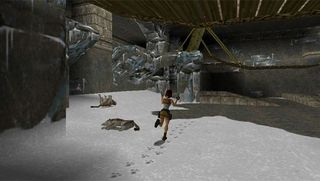
Lara Croft made her mark on the gaming industry with her dual wielding pistols, acrobatic platforming, and raiding of tombs (although her voluptuous figure might have had some to do with her popularity). Any way you look at it, Lara was one of the first significant female lead characters in video games, paving the way for other kickass female heroines.
Tomb Raider also did more for the industry than make Lara Croft a household name; it was one of the first successful third-person shooters of its time. Pulling out Lara's guns to circle strafe jungle cats and armed bad guys while climbing around a labyrinth of traps was awesome. It was an excellent balance between action and exploration - and now, third-person shooters released today still follow the same basic blueprint.
28. Final Fantasy VII (1997)

We won't sit here and try to convince you that Final Fantasy VII was the best Final Fantasy ever made, but it's certainly the most important. Why? Because it established a market for Japanese role-playing games in the West, and - due to its large size, which was too big to store on cartridge media - transitioned the Final Fantasy franchise from Nintendo consoles to Sony's PlayStation.
Sign up to the GamesRadar+ Newsletter
Weekly digests, tales from the communities you love, and more
Love or hate its spiky-haired hero and his noble quest, FFVII is the most popular entry in the series. Its FMV cutscenes were a hit in 1997, and the move from 2D to 3D graphics built a lot hype for the game pre-release. Once available to the public, it garnered a ton of praise from gamers and critics alike, and it was almost single-handedly responsible for the success of the PlayStation. Thanks to booming sales of both the game and Sony's console, many JRPGs now considered to be classics followed suit.
27. Call of Duty 4: Modern Warfare (2007)

No game has been more influential on this current generation of consoles than Modern Warfare. Before its release, Call of Duty was a popular but inconsistent shooter, known for its brutal single-player campaign - but Modern Warfare was the complete package. It was at once a thrilling single-player FPS with great characters, set-pieces and imaginative locations, combined with fast-paced multiplayer that brought together persistent online characters with great maps and Prestige-badge bragging-rights.
As a result, it captured the imagination of an entire generation of players. It has flooded into popular culture, is constantly held up as the high-watermark for modern FPS games - the dominant genre of this generation - and has essentially set the template that the majority of multiplayer shooters now follow. The Call of Duty series has split opinion in recent years, but there's little debate that COD4: Modern Warfare has changed the way we play shooters - on and offline - and reinvented what we've come to expect from blockbuster games.
26. StarCraft (1998)
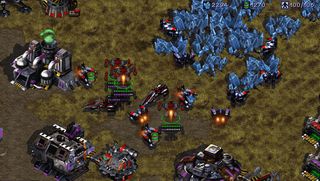
Whereas most real-time strategy games in the mid '90s were content to pit two symmetrical (or slightly different) sides against one another, StarCraft was the first to introduce three completely unique races. This layer of strategy and depth practically redefined the RTS genre, resulting in StarCraft's immense level of success.
As global sales numbered in the millions, StarCraft became one of the first games to popularize eSports. It has become so popular, in fact, that it is now the national eSport of South Korea, where professional matches are played on various television channels and pro players become media celebrities. That's exactly the kind of world we want to live in.
25. Metal Gear Solid (1998)
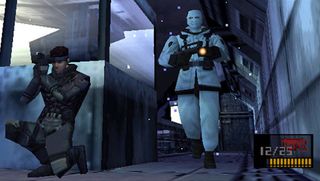
A game lives or dies by its play mechanics, so this often becomes the focus - sometimes at the expense of story. But games like Metal Gear Solid proved that there was room for both. The tight stealth gameplay of MGS made every room full of guards a unique puzzle with multiple solutions, and the boss battles remain some of the most memorable in gaming history. Best of all, the gameplay was made even more enjoyable thanks to a cutting edge story that didn't talk down to its players.
By utilizing the CD-ROM storage of the PSOne, MGS used full voice acting to tell a dramatic story that asked deeper questions about society, war, and humanity than most games had ever dared attempt. You were invested in all the characters, following them through every twist and turn of the story, and every fourth-wall-breaking moment. Director Hideo Kojima decided that gamers and the medium were ready for more adult stories and themes, and that move was a necessary step forward for the industry.
24. Tetris (1984)

No Tetris, no handheld gaming. Simple as that. Launching Alexei Pachinov's sleep-killing tessellation simulator as a box-in with the Game Boy was a simple but game-changing move from Nintendo. Accessible, addictive, and most importantly a perfect cultural fit for gaming on the move, Tetris was, on every level, the perfect advert for the console.
It sold the Game Boy faster than any other game could have, and it established Nintendo as the go-to company for handheld consoles from that point on. And its influence can still be felt in the mobile gaming surge. All the biggest, best and enduring games follow Tetris' core design mantra. Its the philosophical blueprint for what a handheld game should be, never bettered since its NA release in 1986.
23. Virtua Racing (1992)

3D gaming wasn't anything new in 1994. But gobsmacking wonder-visuals like those of Virtua Racing most certainly were. Sega's Model 1 hardware could chuck around 180,000 flat-shaded polygons every second, effectively making everything else obsolete. These polygons ran at 60 frames per second and looked rock-solid, allowing gamers to feel like this racetrack really existed somewhere behind the TV screen.
And, being 3D, you could move the camera. The four camera options could be switched in real-time, smoothly swooping out and back towards the car, passing through the roll cage and into the drivers head, where you watched virtual hands see-saw at the wheel, polygonal fingers flipping the paddle shift in mimicry of your own. Put simply, Virtua Racing was an unbelievable leap forward.
22. The Legend of Zelda: Ocarina of Time (1998)

Making games in the third dimension was one of the greatest challenges in game design history. Some had found ways to make it work in a controlled area such as a racetrack or a square fighting ring, but giving a player an entire world to explore seemed too big a challenge. Super Mario 64 found a way to make it work as a platformer focused on singular goals, but The Legend of Zelda: Ocarina of Time built a fully-realized 3D world that changed everyones expectations of just how big a game world could be.
Z-targeting, the combat, and fast travel all seem fairly obvious inclusions now for 3D gameplay, but were new ground when Ocarina set the standard for navigating a polygonal world. Ocarina captured the same of wonder for open exploration that the original had, only this digital landscape felt more real than anything gamers had ever experienced. Many games have eclipsed Ocarina's digital real estate in the years since, but few have felt as big as Ocarina did in 1997.

Sam Loveridge is the Global Editor-in-Chief of GamesRadar, and joined the team in August 2017. Sam came to GamesRadar after working at TrustedReviews, Digital Spy, and Fandom, following the completion of an MA in Journalism. In her time, she's also had appearances on The Guardian, BBC, and more. Her experience has seen her cover console and PC games, along with gaming hardware, for a decade, and for GamesRadar, she's in charge of the site's overall direction, managing the team, and making sure it's the best it can be. Her gaming passions lie with weird simulation games, big open-world RPGs, and beautifully crafted indies. She plays across all platforms, and specializes in titles like Pokemon, Assassin's Creed, The Sims, and more. Basically, she loves all games that aren't sports or fighting titles! In her spare time, Sam likes to live like Stardew Valley by cooking and baking, growing vegetables, and enjoying life in the countryside.

Destiny 2 is un-sunsetting every gun in the MMO with The Final Shape's massive Power changes – but Bungie says "we have no recovery mechanism" for deleted ones

After nearly 3 years in Early Access, one of the best co-op horror games I've played miraculously gets full launch amid stellar Steam reviews
Most Popular



